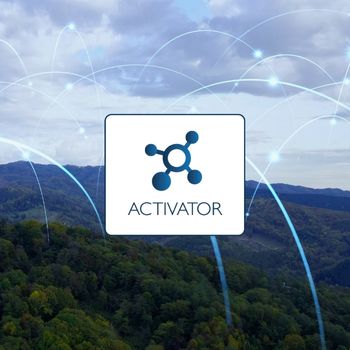Energie AG
Energie AG leverages B72 450 MHz to seamlessly connect 6000 substations in the Austrian Alps
Westermo cellular routers facilitate substation connectivity, featuring over-the-air management and integrated protocol conversion.
Energie AG Oberösterreich, an Austrian utility, chose Westermo cellular technology for the upgrade of 6000 substations from CDMA 450 to LTE 450 MHz. Westermo, via its subsidiary Virtual Access (now named Westermo Ireland), played a role in 2014 when CDMA was selected by Energie AG as the communication solution for the deployment of smart meters. As CDMA reaches the end of its lifecycle and the industry shifts to LTE, Energie AG decided to upgrade their private 450 Mhz network from CDMA to LTE technology.

Map of all Energie AGs assets to be connected by 450 MHz
Selecting private over public LTE
The decision to use a private network was driven by cybersecurity concerns and the necessity of ensuring blackout safety. Additionally, maintaining a high degree of control over the network also played a significant role in this choice.

Cell tower providing 450 MHz connectivity
The features of 450 MHz are ideally suited for the needs of Energie AG:
"The topology in our areas is very mixed – we have flat areas, hilly areas and very high mountains. What we have found is that the 450 MHz frequency works very well in all of these topologies"
Walter Pesendorfer, Head of the Radio Services Team at Energie AG explains.
Operating at a low frequency, 450 MHz can cover a vast area with a reduced number of cell towers, which Walter Pesendorfer explains was another big benefit for Energie AG.
"For us, one of the biggest benefits of 450 MHz is that we don’t need so many base stations, which is a big cost benefit”
Applications within the network vary from SCADA to smart meter aggregation. Energie AG is also using the technology to control distributed energy resources such as solar and wind farms.
Choice of networking technology
The private specialized network will be comprised of approximately 8,000 Westermo devices for its communications, spread across the country. Westermo's cellular routers are designed with the needs of utilities and critical infrastructure in mind. They include technology such as protocol conversion and integrated RTU functionality, which allows Energie AG to connect diverse assets such as Distributed Energy Resources and older equipment easily. The devices can convert SCADA protocols such as 101, Modbus, 104 or DNP3, Digital I/O into a unified format, making maintenance, operation, and testing more straightforward.

An example of a cabinet housing the Westermo router
Project rollout
By the first quarter of 2024 the project implementation was initiated. By June 2024, 10% of base stations have been implemented with the use of Activator, the proprietary automated provisioning and monitoring software from Westermo, which facilitates the deployment and management of routers.
"We are a small team with a lot of devices to manage, so the key for us is the management system. We rely on Activator and Monitor software for provisioning and monitoring. It is crucial for us, and we consider it the best on the market" Walter Pesendorfer commented.
With a successful result, the green light has been given for the rollout of the remaining substations. Pesendorfer expects that the migration process will be completed by end of 2026.
Energie AG Oberösterreich is a provider of electricity, gas, heat, water as well as waste disposal and information and communication technology services. Energie AG supplies more than 450,000 customers with electricity via the 33,000 km long high and low voltage network generated in 43 hydroelectric power plants, 11 thermal power plants and recycling plants, 100 photovoltaic systems and 14 wind turbines.
See also

450 MHz spectrum for critical utility communication
Wide coverage, enhanced penetration, and reliability make 450 MHz an excellent choice for private networks, especially those that require robust, wide-area coverage and secure, reliable communication channels.
Learn more about 450 MHz
Effortless Router Management at Scale
Activator software offers Zero Touch Deployment for quick and secure router setups, comprehensive remote management for large estates, and real-time monitoring to ensure optimal performance. Its scalability and enhanced security make it an invaluable tool for modern network management.
Learn more
Integrating critical legacy systems with modern technology
Integrating critical legacy systems with modern technology can be challenging but essential. Protocol conversion is key, ensuring seamless data flow between old and new systems.
Learn howCarl de Bruin
International sales

Jos tarvitset asiakastukea, ole hyvä ja käytä tukilomaketta
